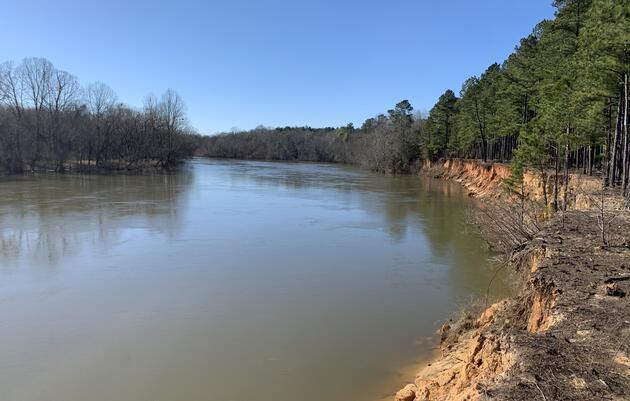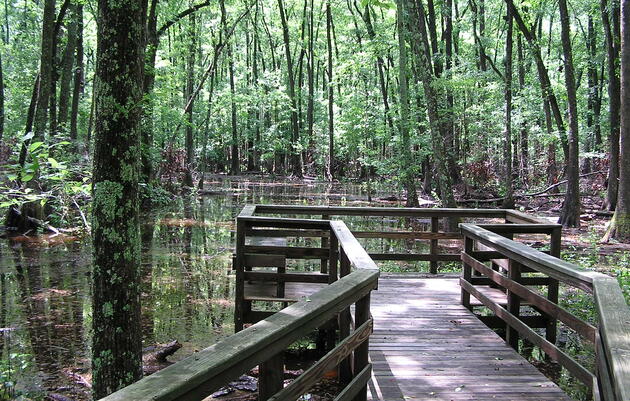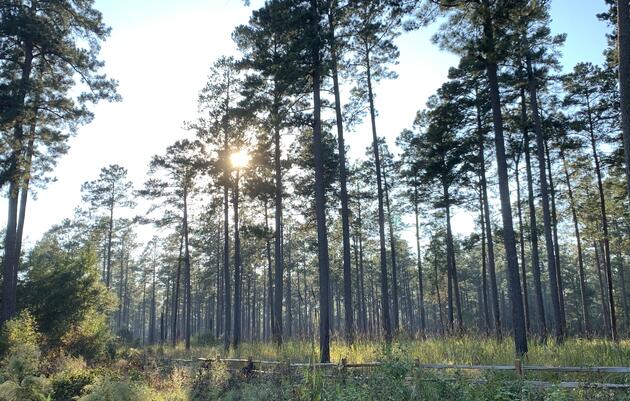Kathwood Ponds
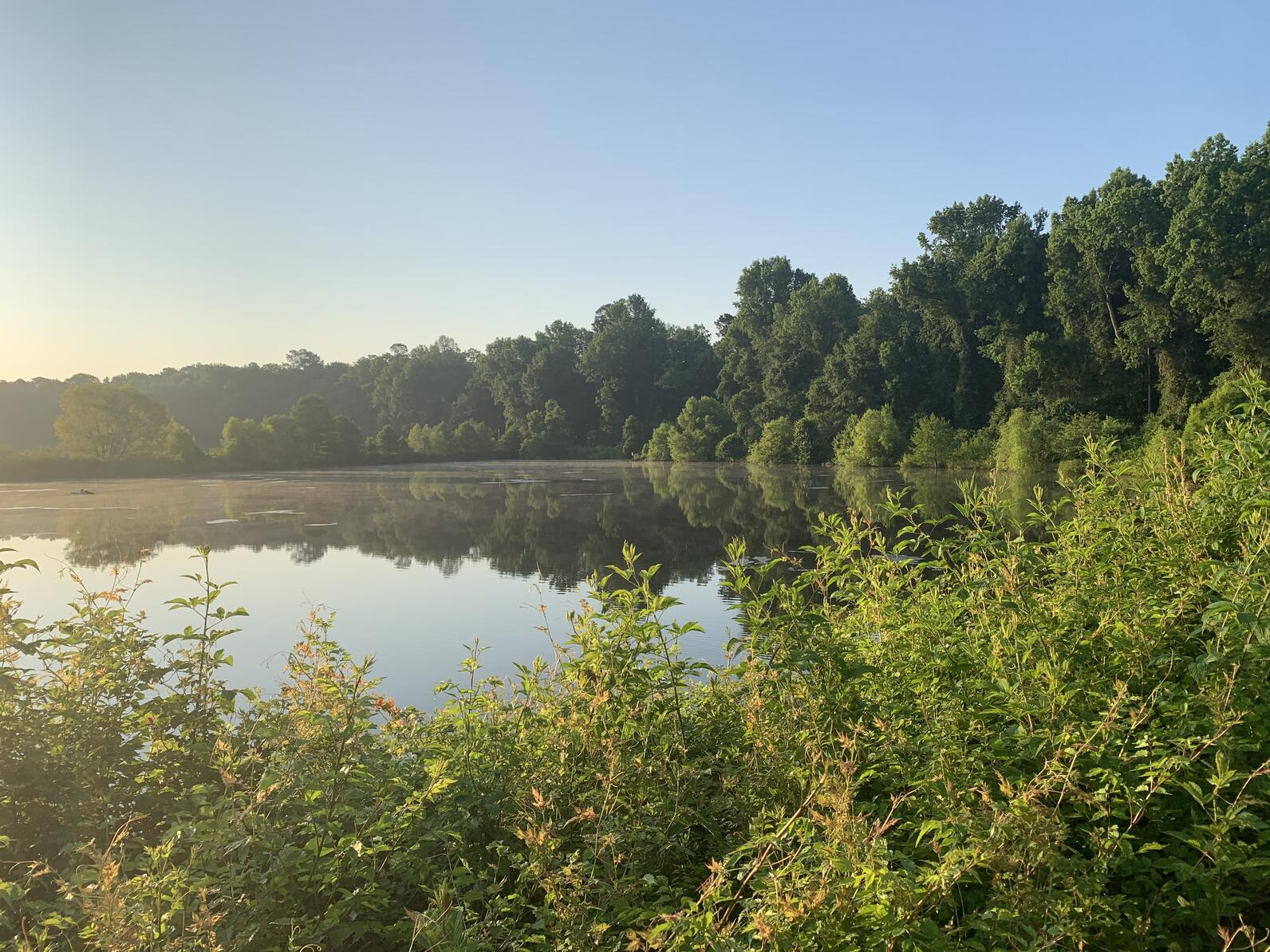
Highlights: Short trail with excellent views of ponds and mudflats. Herons, egrets, and shorebirds in late summer and fall.
e-Bird: Silver Bluff Audubon - Kathwood Ponds
From Old Jackson Highway, continue south on Silver Bluff Rd. past the railroad tracks. Kathwood Ponds are .4 miles south on the left (east). Park in front of the chain link fence with wooden bird cutouts on it. The ponds to the right (west) of the road are private property but can be scanned for birds such as Anhinga and Hooded Merganser. The telephone wires that cross the first pond on the west attract hundreds (high count of 750) of Rough-winged Swallow in August--the birds gather here to feed prior to migrating south.
At the parking site, the hardwoods above the maintenance shed attract Summer Tanager, Orchard Oriole, Eastern Kingbird, Northern Parula, Yellow-throated and other migratory warblers in spring and summer. Scarlet Tanager, Rose-breasted Grosbeak, and Baltimore Oriole have been spotted here during migration.
Enter through the gate and walk slowly up the short dirt road to the ponds—this initial view of the pond is one of the best. A kiosk here provides viewing directions for an active Bald Eagle nest on the far side of the rail tracks. Scan the surrounding trees for perched adult or juvenile eagles, which can be present year-round. Walk in either direction—the trail is a figure 8 shape.
The brush along the dikes is good for sparrows in winter. During migration, Northern Waterthrush and Painted Bunting frequent brush near the cypress saplings. Except in summer, Wilson’s Snipe frequent the pond’s muddy banks. Anhinga often perch on vegetation or structures in the ponds.
The three Kathwood Ponds are managed as late summer feeding sites for Wood Stork. Water is drained, concentrating prey such as fish, tadpoles, and crayfish. The two ponds closest to the road are completely encircled by dikes with raised, grassy roads. The third pond from the road can be viewed from two sides and is bordered by an active rail line. The ponds are about 60 yards wide so birds may be viewed at relatively close range. A spotting scope is helpful for shorebird identification. Brush and small trees along the dikes provide good cover for birders—if you are quiet the waders and shorebirds don’t typically flush. Please do not harass or intentionally flush birds. Enjoy a sit at the observation platform at the south end of the middle pond. Scan the skies for falcons and other raptors.
Water levels are drawn down one pond at a time. When one pond is “fished out,” another is lowered. Wading bird numbers are typically highest in the pond where water has most recently been lowered, but birds will be present in all the ponds..
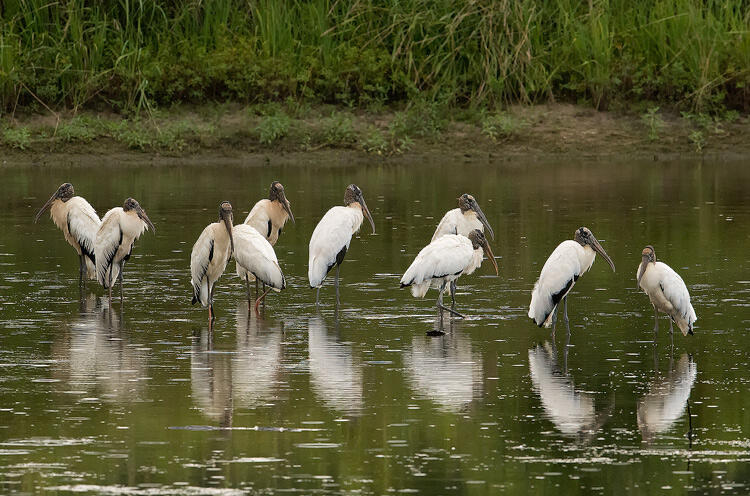
A high count of 525 Wood Stork has been tallied. High counts from e-Bird for waders are Great Egret (189), Snowy Egret (15), Cattle Egret (350), Great Blue Heron (11), Little Blue Heron (47), Green Heron (6), and Tricolored Heron (2). Both Yellow-crowned and Black-crowned Night-Herons may be seen—look under the brush along the pond edges. Dozens of White Ibis (114) are routine and Glossy Ibis are sometimes seen. There are recent records of Roseate Spoonbill, although these striking birds remain rare.
Exposed mud attracts shorebirds—24 species have been recorded at the ponds, including (e-Bird high counts) American Avocet (10) and Black-necked Stilt (6). Close-viewing conditions provide excellent opportunities to study the “peeps”: Least Sandpiper (200), Western Sandpiper (12), and Semi-palmated Sandpiper (8). Solitary Sandpiper (12), and Pectoral Sandpiper (50) are regular, as are Stilt (9) and Spotted (8) Sandpiper and Greater (30) and Lesser (30) Yellowlegs. Mudflats in this part of the state are hard to find, and almost any shorebird can turn up at Kathwood. Buff-breasted and Baird’s Sandpiper have been recorded, as well as American Golden Plover, Willet, Ruddy Turnstone, and Wilson’s and Red-necked Phalarope.
The pond closest to the rail tracks has emergent vegetation. Both Least and American bitterns have been recorded here, as has Common Gallinule. Black-bellied Whistling Duck has have been recorded nesting here. In winter the ponds attract Bufflehead, Hooded Merganser, and other waterfowl. Blue-winged Teal are often present in late summer. Sixteen species of ducks and geese have been seen at the ponds. Ducks typically flush as soon as they see people.
From the parking spot, walking Silver Bluff Road north and south from the Kathwood Ponds can be great birding. Walking north on the paved road, watch the forest edges on both sides for fall warblers such as Chestnut-sided and Blackburnian. Indigo Bunting and Blue Grosbeak nest in the regenerating pine forests to the west. The dirt road south takes you to a bridge over Hollow Creek. Listen here for Barred Owl. In spring through fall this is a good spot to hear and see Northern Parula and Yellow-throated Warbler. The dense vegetation on the upstream side of the road is one of the best places for thrushes in fall migration. This section of road can be a spring and fall warbler migration hotspot.
Quail Trail
Highlights: Sensational view of the Savannah River; brush and field birds edge and grassland birds; cultural history.
Tanager Trail
Highlights: Habitat diversity; swamp forest edges and warbler migration; short swamp boardwalk.
Nuthatch Trail
Highlights: Longleaf pine ecosystem; Bachman’s Sparrow; Red-cockaded Woodpecker Habitat, Interpretive stations for kids.
How you can help, right now
Sanctuaries
Plan a trip to one of Audubon South Carolina's two wildlife sanctuaries in the state.

